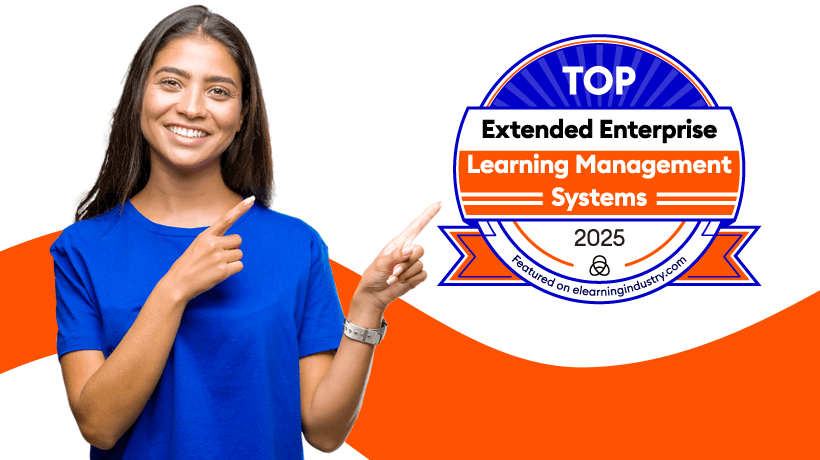How To Find The Right Extended Enterprise LMS For Your Organization
Finding the right extended enterprise LMS can be costly. The pursuit for the perfect LMS usually involves trial and error. Not to mention time-consuming test rounds, LMS vendor interviews and extensive learning analysis. The free eBook LMS Buyer’s Kit provides resourceful ways to quickly narrow your list of potential extended enterprise learning management systems. This article also provides several tips to streamline the LMS selection process and help you find the right extended enterprise LMS for your needs.
1. Set Your Learning Budget
It’s essential to have a detailed learning budget before you start your extended enterprise LMS search. You must know how much you’re working with, what you’re willing to spend and what you expect from the investment. Next, gather all of your existing learning tools and assets to avoid redundancies, and figure out what you can reuse and repurpose. This also gives you the ability to itemize your expenses and cut costs. Lastly, take your time during the trial period and make a checklist of the strengths and weaknesses of each LMS platform. Then compare the results when it’s time to invest in your multi-audience LMS.
2. Pinpoint Your Primary Learning Objective
There is a specific reason why your organization needs an extended enterprise LMS. Pinpoint this primary purpose and then find an LMS platform that addresses it. For example, your company needs to increase its monthly training sales or significantly improve its customer service satisfaction ratings. This allows you to determine which LMS features and functions you require.
3. Create A Must-Have Features List
That leads right into my third tip, which is to create a list of must-have features that your organization needs. For the extended enterprise, this should include: eCommerce, an intuitive, brandable and localized UI, mobile, social, certifications, analytics and a flexible architecture that can scale with your external training demands. A detailed list gives you the power to narrow down your group of top candidates more rapidly. You should also create a separate list of “wants” that you’d prefer to have, if your eLearning budget allows. The free eBook LMS Buyer’s Kit presents the features a modern extended enterprise LMS must have for optimal engagement and success.
4. Evaluate Your Current External Training Program
Analyze every aspect of your current extended enterprise learning program to identify key strengths and weaknesses. Are there skill or performance gaps that you need to address? Do your external partners, resellers or distributors feel they have all of the resources they require to represent your brand? Are you building enough loyalty among your existing customers? Ideally, your new extended enterprise LMS should reduce or eliminate top learning pain points that hinder company growth.
5. Collect Employee And Partner Feedback
Your sales partners, franchisees, distributors and even in-house employees are great sources of feedback. They can help you evaluate your current external learning strategy and determine what you need from your next extended enterprise LMS. Conduct surveys, focus groups, interviews and pre-assessments to determine their preferences and opinions. This also allows you to understand their knowledge base so you can track their progress and incorporate the learning content and LMS features that suits them the best.
6. Gather Your Existing Learning Resources
If you plan on using existing learning resources, you’ll need an extended enterprise LMS that supports these file formats. Furthermore, you should be able to easily migrate your data without having to hire an IT expert. Evaluate your current resources to ensure that the new LMS platform is compatible. When in doubt, ask the LMS vendor about their integration features, including which apps and add-ons are available. For example, you may be able to purchase a plug-in that imports and converts your data with ease. However, they may already have a REST API library for easy, seamless integrations.
7. Vet Your Top LMS Candidates
You’re already pressed for time. Thus, you probably don’t have room in your schedule to try out every learning management system on the market. For this reason, you need to create a list of top LMS candidates and then quickly vet the most promising. Schedule interviews or send out RFIs (Request For Information), and weigh the pros and cons of each solution. You can also share the findings with your team to get them involved in the decision-making process, which will help speed future LMS adoption. A side benefit of vetting your top candidates is getting a preview of future partnerships. For example, if they are unresponsive to your emails now, you’ll probably have the same issue after making your purchase. Look for an LMS partner who’s invested in your current and future success.
8. Research Online Ratings, Reviews And Recommendations
There are many social media sites, online discussion forums and analyst blogs where you can find LMS reviews. You can also find recommendations for an extended enterprise LMS you may not have considered. Additionally, you can cross an LMS vendor off your list based on unfavorable ratings. For example, a high percentage of customers had an issue with the LMS vendor’s support services. If you can’t find the information you’re looking for, post a question or comment in a social media group. Another option is attending trade shows or conferences to discover new learning management systems and meet the vendors face-to-face. Finally, you can also check Craig Weiss’ latest LMS Rankings as featured in Expertus’ free eBook LMS Buyer’s Kit.
9. Give Your LMS Finalists A Test Drive
While other learning professionals can give you their reviews and recommendations, you should also test drive every short-listed extended enterprise LMS yourself. You can explore their extended enterprise features, try out their user interface and user experience and evaluate each platform’s roadmap and support services. Most vendors offer free LMS demos or trials. Get your team involved and ask them to design and deploy a pilot LMS implementation project for the extended enterprise LMS. For example, a partner certification course that is offered via a mobile app, in multiple languages, for global learners that work in the field. Then hold a wrap-up meeting to gather their feedback about the LMS’ capabilities and its overall functionality.
Extended enterprise learning management systems constitute a big investment. As a result, knowing the exact process you need to follow to get to the optimal solution is indispensable. These nine tips can help you quickly narrow down your list of potential extended enterprise LMSs and avoid ending up with an inadequate choice.
Download the free eBook LMS Buyer's Kit and get informed on important questions to help you prioritize your company’s LMS selection needs. The LMS Buyer’s Kit will also educate you on criteria that will help you select the best LMS software provider









